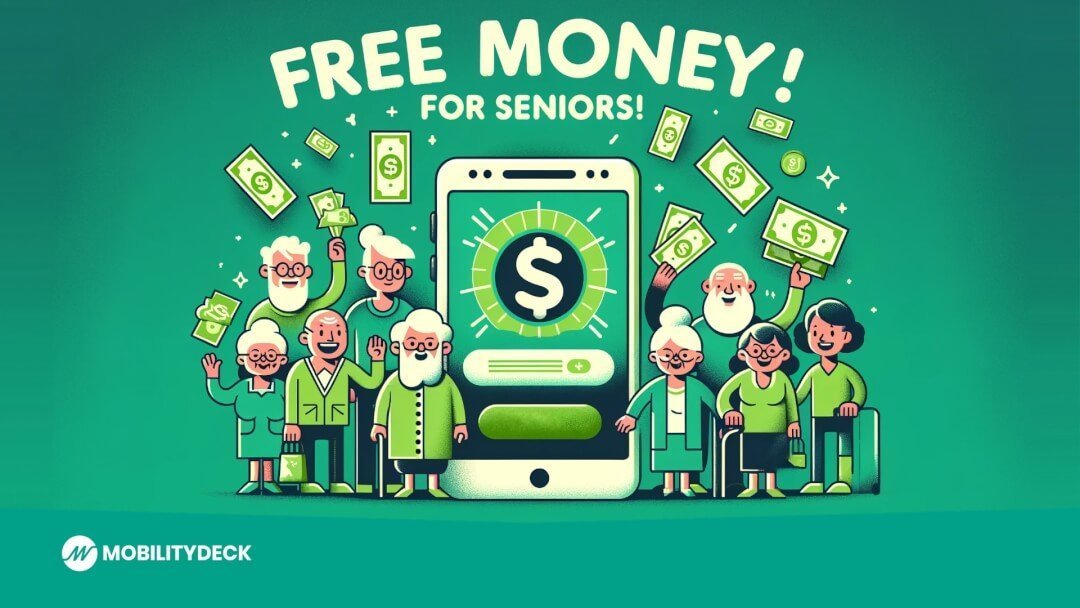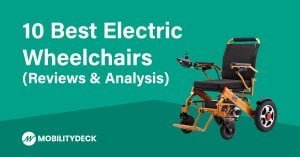- Senior Living
- Our Quality Guarantee
- Last Updated January 23, 2024

$3,000+ in Free Government Money: A Guide to Senior Assistance Programs
Let’s dive into the world of financial aid for seniors. Retirement isn’t always easy on the wallet, and knowing about the help is smart. Did you know a retired couple at age 65 in 2023 might face medical expenses of around $315,000? And that’s not even counting things like dental work or over-the-counter meds [*].
Here’s something interesting: in 2023, the highest monthly Social Security benefit is $3,627 if you retire at full age. Wait till 70, and it jumps to $4,555, but start at 62, and it’s $2,572 [*][*]. The average monthly check? About $1,705.79 as of August 2023 [*]. If you’re a retired worker, you’re likely getting a bit more, around $1,840.27 monthly [*].
Now, onto the good stuff – government assistance programs. These are lifesavers for everything from medical bills to home repairs. Think Medicare and Medicaid for health insurance if you’re low-income, elderly, or disabled. Need help with food? SNAP’s got your back.
Here are some cool programs you might not know about:
- Reverse Mortgage Program: If you’re 62 or older and own your home, this could give you a steady income.
- Housing Rehabilitation Grants and Loans: Got a health or safety issue at home? These can help fix it up or make it more accessible.
- Senior Farmers’ Market Nutrition Program (SFMNP): Love fresh produce? This program gives coupons for fruits, veggies, honey, and herbs.
- Senior Community Service Employment Program (SCSEP): Need job training or work? This program is for low-income seniors.
In This Article
General Financial Aid for Seniors
Hey there! Let’s talk about some financial support options for seniors. It’s good to know what’s out there, right?
Senior Assistance Program ($3,000 or more)
Each state has its version of the Senior Assistance Program, offering anywhere from $500 to $5,000 annually. This aid is custom-fit for seniors’ unique needs. Contact your local Area Agency on Aging to get the latest info and how to apply.
Social Security Benefits
You’re eligible for benefits if you’re 62 or older and have paid into Social Security for 10+ years. In 2023, the average monthly payout is about $1,500. The amount you receive depends on your earnings history and when you retire. For instance:
- Retiring at full retirement age in 2023? Your maximum benefit could be $3,627.
- Retiring at 62 in 2023? Expect up to $2,572.
- Waiting until 70 in 2023? You could get $4,555 monthly.
Remember, these benefits adjust annually for inflation. Check out the Social Security Administration’s website for updates and useful calculators.
Supplemental Security Income (SSI)
This is for low-income seniors aged 65 or older, especially if you earn less than $2,000 (single) or $3,000 (couple) monthly. In 2023, the maximum federal SSI is $914/month for individuals and $1,371/month for couples. However, this varies by state, with some states providing extra funding. For example, California offers a max of $1,133.73/month for individuals and $1,927.62/month for couples. Visit the Social Security Administration’s SSI page for state-specific details.
Tax Credit for the Elderly and Disabled
This program can provide a tax credit between $3,750 and $7,500. To qualify, you must be:
- 65+ at the end of the tax year, or
- Under 65, retired on permanent and total disability, and received taxable disability income during the year.
Income limits apply and vary based on your filing status and household size. Full source here, and easy-to-check tool to claim Credit.
Healthcare Assistance
Medicare: Comprehensive Coverage
Medicare is your go-to for a broad range of health services. Part A is usually free and covers hospital stays, while Part B takes care of outpatient services at about $164.90/month for 2023. Remember, higher earners might pay more. You’ll encounter deductibles and copayments, which vary based on the services and additional plans like Medigap or Medicare Advantage. Check out the Medicare website for more specifics.
Medicare Savings Programs: Financial Support
The Medicare Savings Programs (MSPs) provide financial assistance to eligible individuals to help pay for Medicare costs. Here’s a detailed look at the different programs available in 2023:
- Qualified Medicare Beneficiary (QMB) Program: This program assists with Part A and B premiums, deductibles, coinsurance, and copayments. Income limits are $1,235 monthly for individuals and $1,663 for married couples, with resource limits at $9,090 and $13,630, respectively. Those qualifying won’t be billed for covered services, may have a small Medicaid copayment, and get Extra Help with prescription drugs, paying no more than $4.30 per drug.
- Specified Low-Income Medicare Beneficiary (SLMB) Program: This covers Part B premiums for those with Part A and B. Income limits are $1,478 for individuals and $1,992 for couples, with the same resource limits as the QMB program. Qualifiers get Extra Help for prescription drugs, paying up to $10.35 per drug.
- Qualifying Individual (QI) Program: Similar to SLMB, this program covers Part B premiums. Income limits are higher at $1,660 for individuals and $2,239 for couples. It requires an annual application, with priority given to the previous year’s beneficiaries. It also offers Extra Help for prescription drugs, capping costs at $10.35 per drug.
- Qualified Disabled & Working Individual (QDWI) Program: Specifically for disabled individuals who are working and lost Social Security disability benefits and Medicare premium-free Part A upon returning to work. It helps pay Part A premiums only. Income limits are $4,945 for individuals and $6,659 for couples, with resource limits at $4,000 and $6,000, respectively.
These programs are crucial for those who need financial support with their Medicare costs. The income and resource limits vary, catering to different groups based on their financial situation and needs. It’s important to check these details regularly as they can change annually.
For detailed information, visit the Medicare Savings Program page.
Extra Help (Part D): Prescription Aid
For those qualifying for Full Extra Help in 2023, expect no premiums or deductibles for your Part D plan, and once your drug costs hit $7,400, prescriptions are free. Partial Extra Help offers varied premiums and a set deductible of $1,048. Eligibility hinges on your income ($1,843/month for singles in 2023) and certain asset limits. Plus, if you’re enrolled in Medicaid or a Medicare Savings Program, you’re automatically in for Extra Help.
Many states have programs complementing Medicare Part D. These can offer additional benefits, like covering drugs not listed in Part D plans.
Link to State Programs: Medicare Interactive
Remember that these limits can change yearly, so staying informed about eligibility criteria and benefits is essential.
Medicaid: Broad Coverage for Low-Income Individuals
Medicaid steps in with extensive medical coverage for low-income folks. Think doctor visits, hospital expenses, and even long-term care – a big plus for seniors needing those services. Each state has its own set of rules and benefits, so head to the Medicaid website for the specifics.
PACE: Integrated Care for Seniors
If you’re 55 or older and need nursing home-level care, PACE might be for you. It offers comprehensive medical and social services, mostly at PACE centers, homes, and hospitals. Dive into more details on the PACE page on the Medicare website.
US Department of Veterans Affairs (VA): Veterans’ Health Services
Veterans, this one’s for you. The VA provides many healthcare services, including hospital and outpatient services. While care usually happens at VA facilities, some veterans might get it at private ones. Your eligibility and benefits depend on factors like your service history. Explore more on the VA Health Care website.
Remember, these programs and limits update yearly, so keeping informed is key to getting the most out of these benefits.
Home Modification Programs for Accessibility Improvements
Home Improvement and Structural Alterations (HISA) Grant
– Funding Details: The HISA Grant offers up to $6,800 for veterans with service-connected disabilities and up to $2,000 for those with non-service-connected disabilities. This grant can be used for modifications like wheelchair ramps, walk-in showers, and grab bars.
– Application Process: Veterans can apply through the VA’s HISA program page, where they will find detailed instructions and necessary forms.
USDA Rural Development Home Repair Loans and Grants
– Financial Assistance: Rural seniors with low incomes can receive grants of up to $7,500 and loans of up to $20,000 for home modifications through this program. These modifications can include essential repairs for safety and accessibility, like roof repair and structural alterations.
– Eligibility and Application: Information on eligibility and application can be found on the USDA Rural Development website.
Rebuilding Together
– Services Offered: Rebuilding Together provides free home modification services focusing on safety and accessibility for low-income seniors. This can include installing ramps, widening doorways, and improving bathroom safety.
– Accessing the Program: Seniors can apply for assistance or get more information on the Rebuilding Together website.
Community Development Block Grant Program (CDBG)
– Local Government Allocation: Administered by HUD, the CDBG program allocates funds to local governments for various projects, including home modifications for seniors. The funding can cover a wide range of modifications to improve the safety and accessibility of senior homes.
– Finding Local Programs: Seniors can learn about CDBG-funded programs in their area by contacting their local city or county government. More information is available on the HUD CDBG page.
State and Local Programs
– Variety of Options: Many states and localities offer their home modification programs for seniors. These can include grants, low-interest loans, or even free services from local contractors. Programs vary widely in terms of funding amounts and eligible modifications.
– Finding Programs: Seniors can find these programs by contacting their local Area Agency on Aging or visiting state government websites.
For example, NYC offers various forms of support to individuals with disabilities and seniors, addressing housing stability, homelessness prevention, reasonable accommodations, accessibility improvement, housing assistance, family support, developmental disabilities, Medicaid assistance, and community inclusion; more information is available on the NYC website.
Transportation Assistance for Seniors
Overview of affordable transportation assistance and subsidy options for seniors, covering costs and services for more accessible travel.
Elderly and Persons with Disabilities Transit Fare Programs
Public transit systems in many cities offer reduced fares or even free travel for seniors, typically starting at age 65. The discounts can range from 50% off to completely free, depending on the city.
- Example: The New York City Metropolitan Transportation Authority offers a Senior MetroCard with fares at half the regular price.
Medicaid Non-Emergency Medical Transportation (NEMT)
For Medicaid beneficiaries, NEMT services provide transportation to and from medical appointments. This program is particularly important for seniors who have regular healthcare needs but lack access to transportation.
Senior Transportation Grant Programs
Grants like the Federal Transit Administration’s Section 5310 fund local agencies for transportation services tailored to seniors. The federal share of eligible capital costs can be up to 80% and 50% for operating assistance. The program is designed to improve mobility for seniors by removing barriers and expanding transportation options.
Area Agencies on Aging (AAA) Transportation Services
Area Agencies on Aging (AAA) are absolute lifesavers. They offer personalized transportation, helping you get to medical appointments, grocery stores, or other vital spots. You can find them through the Eldercare Locator. It’s like having a friend in the community who’s always ready to give you a lift.
Paratransit Services
Paratransit services are an excellent alternative to regular public transit, challenging those who find them. They offer door-to-door rides and cater to individuals with mobility issues or disabilities. These services usually require an application and certification process.
- Example 1: The Washington Metropolitan Area Transit Authority offers MetroAccess with fares twice the base public transit fare, up to a maximum of $6.50.
- Example 2, the Pace Suburban Bus in Chicago charges $3.25 per ride. Riders can purchase booklets of 10 tickets for $32.50
Volunteer Driver Programs
In many communities, there are awesome volunteer driver programs. Local nonprofits or senior centers coordinate these, where kind-hearted volunteers drive seniors around.
- Example: The Independent Transportation Network offers ITNAmerica, where rides are given in exchange for volunteer credits or nominal fees.
Ride-Sharing Services with Senior Specializations
Ride-sharing apps like Lyft and Uber offer senior-friendly services. These might include special assistance or user-friendly apps. Prices vary, but they provide a convenient alternative to traditional taxi services.
Senior Shuttle Services
Many senior centers or community groups run shuttle services. These have set routes and schedules, stopping at places like shopping centers or hospitals. It’s like having a mini-bus service designed just for you and your peers.
ITN America (Independent Transportation Network)
A nonprofit organization that provides sustainable, community-based transportation services for seniors and adults with visual impairment. ITN America utilizes private automobiles and offers rides on a membership basis.
Concluding Thoughts
The world of help for older adults is changing. Now, there’s more awareness and better programs out there. These updates mean programs can now fit what different older people need.
We know getting older can be costly. Things like medical bills, housing, and everyday costs keep going up. But, the good news is that there’s more help available now. These programs do more than the basics – they offer help with getting around, eating right, and even legal stuff.
It’s gotten a lot easier to find out about these programs, especially online. Websites like Benefits.gov and BenefitsCheckup.org are super user-friendly. They put a bunch of helpful info in one place, making life easier for older folks and those who care for them.
There’s a catch, though. Many people who could use these programs aren’t signed up. Some don’t know about them, or find the paperwork too tricky. Fixing this is a big deal and needs more attention.
Today’s support for older adults isn’t just about money. It’s about improving life in a fuller way. It covers living independently, having a good quality of life, and staying connected with others.
These programs keep changing. They update who can join, how much help they give, and what they offer. This is great because it means they stay useful and relevant for older adults.
The main goal now is not just to give financial help. It’s about giving older adults the info, advice, and tailored services they need. This helps them live their later years with respect and freedom.
The bottom line? There’s a lot out there to help older adults live comfortably and securely. It’s super important for them and their families to keep up with what’s available. This can make a big difference in enjoying a relaxed and secure retirement.
Articles You May be Interested In:

















